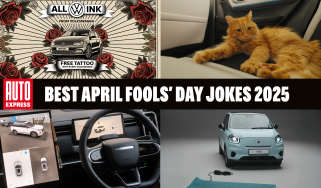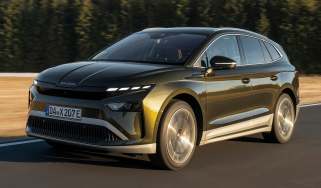Mitsubishi Outlander
The all-new Mitsubishi Outlander aims to claw back sales from its Toyota and Honda rivals

The Outlander is more stylish and takes a big leap forward in fuel efficiency and interior space. It’s more refined on the move, and weight savings make it feel faster and more nimble than its predecessor. However, the interior quality lacks polish and the driving experience is fairly average.
The Mitsubishi Outlander has always been a bit-part player on the SUV scene. But the company is fighting back with an all-new model offering more space, seven seats and better fuel economy.
An advanced Outlander plug-in hybrid is on the way next year, and we’ve just driven the top-selling diesel-engined model on UK roads for the first time.
First impressions are good – the Outlander has a smart new look that’s far more curvy than the car it replaces. A rounded nose is decorated by Citroen-like xenon headlamps that flow into a full-width grille. The new rear end design includes an integrated roof spoiler and smart tail-lamps that stretch the full width of the bootlid.
Sold exclusively in all-wheel-drive form, the new Outlander is virtually the same size as its predecessor, but weighs up to 100kg less, thanks to stronger, thinner steel in the chassis.
Flat underbody panels improve the aerodynamics, too, which means this 2.2-litre diesel model returns class-leading 52.3mpg economy and CO2 emissions figures of 140g/km in manual form. The automatic promises 48.7mpg and 153g/km.
Used - available now
The stronger steel also helps the Outlander achieve a five-star Euro NCAP rating, with optional safety tech including Adaptive Cruise Control, Lane Departure Warning and auto braking.
The Outlander’s not just more efficient; it’s a much better car to drive, too. The diesel engine has the same 174bhp and 380Nm of torque as the previous model, but with less weight to carry it pulls impressively. It’s just a shame the engine rattles at idle and is noisy under acceleration. Still, the automatic gearbox shifts smoothly and the interior is better insulated from road and wind noise than before.
Overall, the Outlander feels lighter and nimbler on its feet than the old car, with steering that weights up nicely in corners. The driver’s seating position feels a little higher than in other SUVs, although the payoff is excellent all-round visibility.
There’s a simple and effective new dash design, with a large gloss-black centre area housing a seven-inch touchscreen, which relays images from the standard reversing camera. Yet the quality lacks the sparkle and freshness you’d expect from a new model.
Practicality has improved, with a longer load area and an optional electric tailgate. Luggage space is now 1,022 litres – up from 989 litres – and there’s even a handy underfloor storage area.
The standard seven-seat arrangement is another trump card, although the seats in the third row are tricky to access for anyone other than small children.











